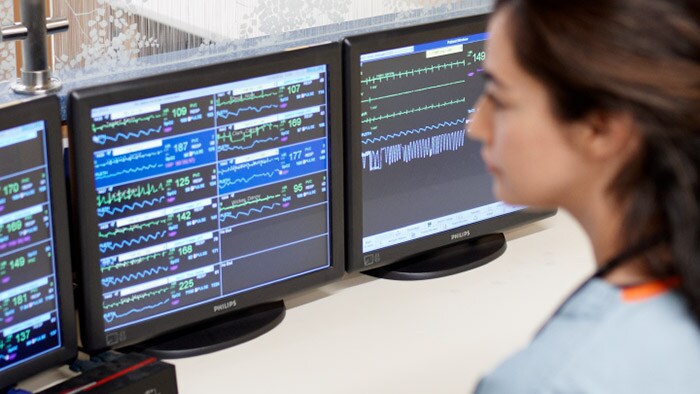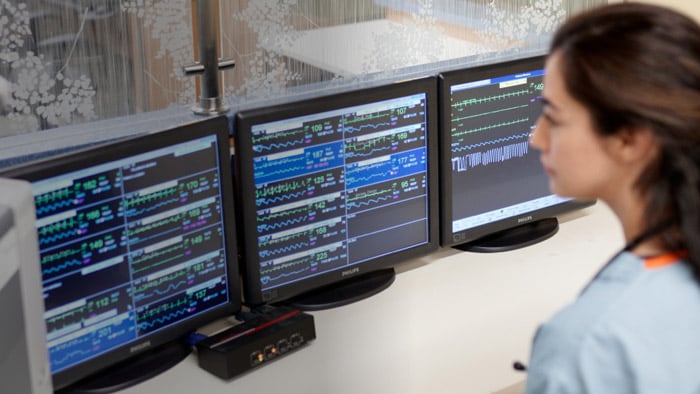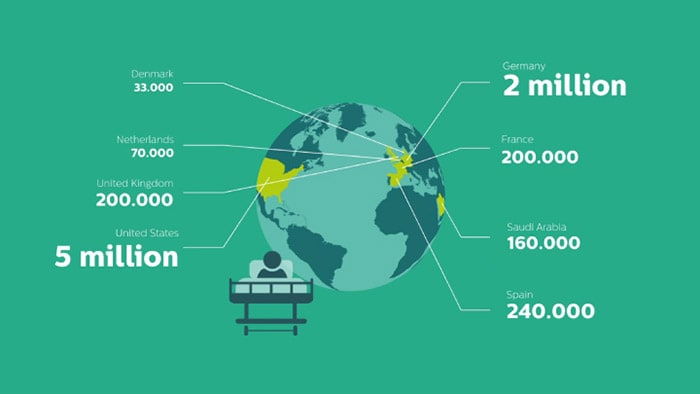High noise levels negatively affect patient outcomes
As a caregiver, you know that alarm fatigue takes its toll on staff. An environment of noise and stress takes a heavy toll on patients, too, interfering with their attempts to sleep, rest and recover.
Stressful, loud care environments can result in:
Time spent responding to nuisance alarms is time lost for direct patient care."
Nurse manager
ICU
Real-life experience
After a traumatic accident, Kathy woke up in ICU. She couldn’t see, speak or breathe on her own—but she could hear everything. In this video, she shares what it was like to bond with a nurse during her time on life support.
Watch the video yourself now.
Noise pollution: an intrusive issue for critically ill patients
Despite interventions aimed at decreasing noise, sound levels in the ICU far exceed World Health Organization (WHO) noise recommendations, especially at night. Discover the effect of noise on seriously ill patients and the evidence-based strategies you can use to protect them.


Links between delirium and hospital noise
Watch a video about delirium in the ICU
Confusion, memory deficits, hallucinations.
Patients’ delirium risk increases with environmental factors like noise, lights and sleep deprivation. ICU patients are especially likely to become delirious—a terrifying experience with dire health consequences.
The good news? Up to 30% of cases can be prevented with non-pharmacological interventions, like making care environments more tranquil.
Alarm management:
become the expert
Philips is
here to help

What drives alarm fatigue? Discover new facts and approaches for making effective change
Get some practical guidance Success stories, exclusive case studies and proven solutions


Alarm management 101
Find out why alarms are more than just a nuisance.
Footnotes: [1] Cropp, A., et al. “Name that tone: the proliferation of alarms in the intensive care unit”, Chest, 1994, V: 105.4, p. 1217.
[2] Aboukhalil, A., et al. “Reducing false alarm rates for critical arrhythmias using the arterial blood pressure waveform”, Journal of Biomedical Informatics, 2008, V: 41, pp. 442-451.
[3] Solet, J., et al. “Managing alarm fatigue in cardiac care”, Progress in Pediatric Cardiology, 2012, V: 33, pp. 85-90.





